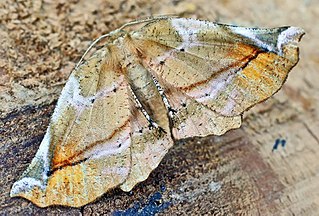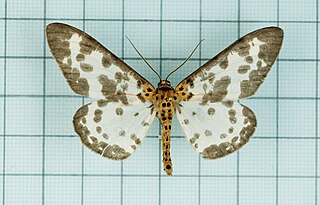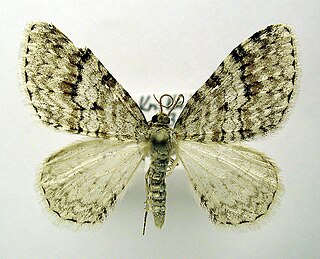
Apeira is a genus of moths in the family Geometridae first described by Johannes von Nepomuk Franz Xaver Gistel in 1848.

Asthena is a genus of moths in the family Geometridae.

Hydrelia is a genus of moths in the family Geometridae erected by Jacob Hübner in 1825.

Lobogonia is a genus of moths in the family Geometridae described by Warren in 1893.

Myrteta is a genus of moths in the family Geometridae. It was first described by Francis Walker in 1861.

Opisthograptis is a genus of moths in the family Geometridae erected by Jacob Hübner in 1823.

Percnia is a genus of moths in the family Geometridae.
Pseudostegania is a genus of moths in the family Geometridae. It is often treated as a synonym of Asthena.

Scopula is a genus of moths in the family Geometridae described by Franz von Paula Schrank in 1802.

Venusia is a genus of moths in the family Geometridae erected by John Curtis in 1839.

Venusia cambrica, the Welsh wave, is a moth of the family Geometridae. It is found in Europe, western and central Siberia, Altai, Transbaikalia, the Russian Far East, the Korean Peninsula, Japan and in North America, where it can be found across Canada from Newfoundland and Labrador to British Columbia, south in the west to California, south in the east to Georgia.

Xerodes contiguaria is a species of moth of the family Geometridae first described by John Henry Leech in 1897. It is found in Taiwan and China.
Scopula modicaria is a moth of the family Geometridae. It was described by John Henry Leech in 1897. It is found in China, the Russian Far East, Korea and Japan.
Asthena octomacularia is a moth in the family Geometridae first described by John Henry Leech in 1897. It is found in Korea and Japan and China.
Hydrelia castaria is a moth in the family Geometridae first described by John Henry Leech in 1897. It is found in China.
Hydrelia undularia is a moth in the family Geometridae first described by John Henry Leech in 1897. It is found in China and Nepal.

Nomenia duodecimlineata is a moth in the family Geometridae first described by Alpheus Spring Packard in 1873. It is found in western North America, from British Columbia to California, Nevada, Arizona and New Mexico.

Venusia comptaria, the brown-shaded carpet moth, is a moth in the family Geometridae. The species was first described by Francis Walker in 1860. It is found in eastern North America, from Florida to Newfoundland, west to Manitoba. The habitat consists of woodlands.
Venusia laria is a moth in the family Geometridae first described by Charles Oberthür in 1893. It is found in China and Japan.
Venusia lilacina is a moth in the family Geometridae first described by William Warren in 1893. It is found in China, Nepal and India.











